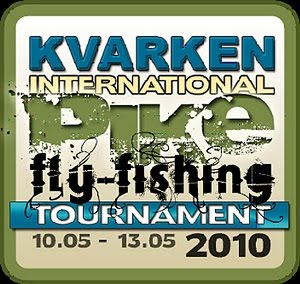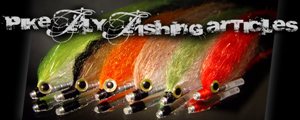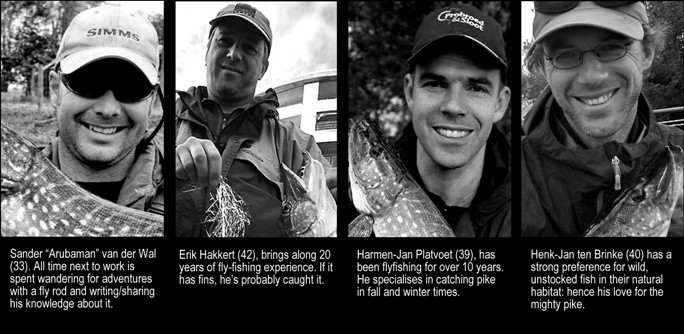31 December 2009
Out of office
Due to notoriously non-liquid fishing waters and the holidays we're out of office until next year, which will start no sooner and no later than 1-1-2010 on this blog.
25 December 2009
Boy George, pike fly fishing & christmas

Just a typical question from a passer-by that will sound familair to a lot of us pike fly fishermen. Shouldn't be too difficult to answer, one would think, but I dare you to give that a serious try specifically for pike fly fishing. Because indeed, why don't we just throw something that really looks like a fish straight into the water? Why do we insist on fishing with things that look like we tied a hook into Boy George's hair? And why all the hassle with that line in the air anyway?
Good questions. So let's make a comparison with some fellow pike guys, the lure fisherman. Let's start with what's in favour of lure fishermen when it comes to catching pike:
- they can cast further;
- they can cast easier, especially with a lot af wind;
- they can cast in places where fly fishermen can't;
- they will hook less passers-by behind them;
- they can fish a water faster and more efficiently;
- they can fish with exact copies of prey fish;
- they can fish with giant projectiles;
- they can fish with lures that make a lot more disturbance in the water to attract pike;
- they can fish deeper and have better control over the fishing depth;
- they can fish easier and with more people in a boat.
- it's a very active way of fishing for pike (so is lure fishing);
- you can cast "flies/lures" that don't sink and allow for a shallow, very slow retrieve (what about balsa poppers and the modern streamers for light spin fishing tackle?);
- the fun of tying your own "flies" (many people build their own plugs or jerk-baits: compare that to tying a bunch of feathers on a hook);
- playing a fish on a fly rod is a lot of fun (modern spinning rods with braided lines are the ultimate in lightweight piking).
I'm (not) dreaming of a.......
23 December 2009
B&W
20 December 2009
Guilty
You all know that fly casting is an art. The art of loop control. The real artist knows exactly what to do and when to do it. Timing is the essence. The skilled caster keeps the lower and upper leg of the loop both travel in a straight line path. Because what he wants is a narrow loop that will pierce through the omnipresent wind like a hot knife through butter. Now take a look at the picture and weep. What the !%$*^& am I doing here? Sometimes it takes a picture or a video to see the error of one's ways. Or maybe I can blame it on the photographer.....
Erik
Dear Erik,
Nope, sorry Erik, a photographer just record what he sees. He can control shutterspeed (1/125; should have been faster in this picture), aperture (f/6.3; about ok for a d.o.f. that needs to cover the whole line), sharpness (diffucult to say what causes the unsharpness of the streamer, motion blur or out of focus) and ISO (500; could have been higher to facilitate a higher shutterspeed). He has influence on the place he takes the picture from and so determine the composition of the picture, but only photoshop and other computerwizard tricks can make a bad cast look good.
But, casting a large streamer, you managed to get it across without hitting the floor or a tree. You placed it within 1 foot of the bank on the other side of the river, so who cares about art.
Harmen-Jan
N.B.
Apart from making a bad cast look good (which would've been a hell of a challenge in this case by the way) you can also use Photoshop to serve as a less radical, but still very useful tool for tweaking your pics. In this case, it took a B&W layer on which you brush back the original colors of the line and after that a further blending change of the layer to make the line and streamer stand out more from the rest, while still keeping some nice green colors in the background.
Hajé
Erik
Dear Erik,
Nope, sorry Erik, a photographer just record what he sees. He can control shutterspeed (1/125; should have been faster in this picture), aperture (f/6.3; about ok for a d.o.f. that needs to cover the whole line), sharpness (diffucult to say what causes the unsharpness of the streamer, motion blur or out of focus) and ISO (500; could have been higher to facilitate a higher shutterspeed). He has influence on the place he takes the picture from and so determine the composition of the picture, but only photoshop and other computerwizard tricks can make a bad cast look good.
But, casting a large streamer, you managed to get it across without hitting the floor or a tree. You placed it within 1 foot of the bank on the other side of the river, so who cares about art.
Harmen-Jan
N.B.
Apart from making a bad cast look good (which would've been a hell of a challenge in this case by the way) you can also use Photoshop to serve as a less radical, but still very useful tool for tweaking your pics. In this case, it took a B&W layer on which you brush back the original colors of the line and after that a further blending change of the layer to make the line and streamer stand out more from the rest, while still keeping some nice green colors in the background.
Hajé
18 December 2009
Hide & seek & funny jaws
16 December 2009
Ice, ice baby.
So there you have it. Our pike heaven froze over. Apparently, nature thought it was time to protect the heavily targeted fish with a temporarily defensive shield. Good for them, and in the long run probably good for us too, since the last month we already noticed fishing pressure has had u huge effect on pike behaviour.
14 December 2009
12 December 2009
Back to seasons's start
When I first read about the tournament last august it triggered me to start thinking about pike fishing again. In the Netherlands pike season closes in march, and before it is legal to start pike fishing again the true fly fishing addcit already is busy with other parts of his precious sport.
Myself, I am a true addict. If I wouldn’t fish for a week, I don’t think I could be held responsible for my behavior anymore. To my girlfriend that can be annoying. I will never be able to walk past a pond, stream or any other type of water without checking it out for the rest of my life. Spotting fish, looking for obstacles, checking out if something is hatching, or even better… is there activity of a rise for example? There is not a single day I don’t think about a fly rod, a tying pattern or fish.
And when I am too busy, I will always manage myself into a position where I will be able to fish for just a little while. One free hour of spare time, just making a few casts during lunch break. It all adds up to the need for fishing that my soul is craving for.
So back to the start of the adventure. The tournament and just thinking about participation made the itches come. Although it was the beginning of october and I was still in a trout and grayling modus, thinking about small nymphs and dry’s, the attention got drawn to the bigger flies. Much bigger I should say, being streamers of at least 10 inches.
The last trip to Denmark should have been a nice and promising autumn one, but weather was going to be worse up there. And last minute, Hajé and I decided it would not be worth the drive all the way up north, just for some murky water nymphing with a strike indicator, where the aim would have been sight nymphing for the biggies. So instead we both decided to earn a little credits with our girlfriend (or family in Hajé’s case). And we did decide to go out one of those days for that very first session of guinea pig launching for pike.
Myself, I am a true addict. If I wouldn’t fish for a week, I don’t think I could be held responsible for my behavior anymore. To my girlfriend that can be annoying. I will never be able to walk past a pond, stream or any other type of water without checking it out for the rest of my life. Spotting fish, looking for obstacles, checking out if something is hatching, or even better… is there activity of a rise for example? There is not a single day I don’t think about a fly rod, a tying pattern or fish.
And when I am too busy, I will always manage myself into a position where I will be able to fish for just a little while. One free hour of spare time, just making a few casts during lunch break. It all adds up to the need for fishing that my soul is craving for.
So back to the start of the adventure. The tournament and just thinking about participation made the itches come. Although it was the beginning of october and I was still in a trout and grayling modus, thinking about small nymphs and dry’s, the attention got drawn to the bigger flies. Much bigger I should say, being streamers of at least 10 inches.
The last trip to Denmark should have been a nice and promising autumn one, but weather was going to be worse up there. And last minute, Hajé and I decided it would not be worth the drive all the way up north, just for some murky water nymphing with a strike indicator, where the aim would have been sight nymphing for the biggies. So instead we both decided to earn a little credits with our girlfriend (or family in Hajé’s case). And we did decide to go out one of those days for that very first session of guinea pig launching for pike.
09 December 2009
Polder pike from the East

Harmen-Jan & Erik, who are both a member of the “Vliegvisgroep Almelo” (Fly Fishing Group Almelo), which is a subsidiary of “Vislust Almelo” (Fishing Lust Almelo), had their annual piking day in november with their club in a polder in the eastern part from Holland (which is no more than 2 hours from the very western part of Holland).
For those of you that are new to these things: a Dutch "polder" is land made out of water. Don't ask us about the chemistry involved to pull this off, but it obviously seems to be working quite well since we build entire cities on (or rather: in) it. Anyway, the classic Dutch polders basically consist of totally flat grasslands with cows or sheep on it, and with smaller and bigger canals in between to drain the water (and drown the animals, as it turns out). This not only means lots of water, but also - and more important to us pike-flyfishermen - lots of shallow and accessable water.
07 December 2009
A real pain in the.........
.......lateral epicondyle.
Testing fly rods is hard work. Especially when they're 9 weights and up. In an attempt to fully load a possible sponsor rod (a 10-weight; I wanna cast at least the whole fly line with this thing) Harmen-Jan regrettably also fully loaded something else: his elbow.
Oh well, just a little overstraining of the muscles. The best thing to do is probably just some more fishing with the lads. And indeed, all went well during the fishing, but in the evening and the day after Harmen-Jan couldn't pick up a coffee cup. And when he found he even had severe difficulties holding on to his beer, he knew something had to be done right away.
Testing fly rods is hard work. Especially when they're 9 weights and up. In an attempt to fully load a possible sponsor rod (a 10-weight; I wanna cast at least the whole fly line with this thing) Harmen-Jan regrettably also fully loaded something else: his elbow.
Oh well, just a little overstraining of the muscles. The best thing to do is probably just some more fishing with the lads. And indeed, all went well during the fishing, but in the evening and the day after Harmen-Jan couldn't pick up a coffee cup. And when he found he even had severe difficulties holding on to his beer, he knew something had to be done right away.
The internet. Epicondylitis lateralis humeri, a.k.a. tennis elbow. A tennis elbow is an inflammation of the tendons that join the forearm muscles on the outside of the elbow. The forearm muscles and tendons become damaged from overuse — repeating the same motions again and again. This leads to pain and tenderness on the outside of the elbow.
Family doctor: "This may take a while, up to a year of rest maybe."
"Well I don't think so doctor, any other options?"
"Well I don't think so doctor, any other options?"
"A fysiotherapist. And if that don't work, we'll inject the damn arm to total silence....."
O.k., let's start with the fysio. Twice a week ultrasound treatment until it hurts to hell, massage it, and train, train train. Concentric weight lifting, or rather, slowly lowering a weight of 2 kg in your hand, so the muscle and especially the tendon gets loaded evenly and gently in order to make it less vulnerable. And indeed, after two weeks it's already getting better. So say goodbye to a full year of treatment. Ha! This will be done within a couple of weeks at the most!
He thought. But then the arm hit back hard. And yet, Harmen-Jan is still confident he'll be able to get rid of this nuisance within no more than two months. Word has it he's already consulting some sort of arm whisperer as we speak. And that's only his second option. God knows what happens if this guy gets desperate!
To be continued.......
He thought. But then the arm hit back hard. And yet, Harmen-Jan is still confident he'll be able to get rid of this nuisance within no more than two months. Word has it he's already consulting some sort of arm whisperer as we speak. And that's only his second option. God knows what happens if this guy gets desperate!
To be continued.......
05 December 2009
Friday pike-day
03 December 2009
C&R
Catch and Release will be a major principle of the tournament in Finland, and it was one of the most important reasons why decided to participate in the first place. In Scandinavia it might be something relatively new, but here in Holland almost all fishermen release their pike and have done so for ages.
Now don't get me wrong: I don't object to taking a pike home for dinner at all (they're delicious, by the way), but if most pike-fishermen would do that here in Holland we simply would not have any pike left in our waters within no time. We're a terribly crowded country, and, despite the fact that we do have a lot of water, the fishing pressure is huge.
So we put them back. But there's more to it. Especially with C&R we don't like the pike to get damaged during the process. The pike doesn't like that, nor does the fisherman who's next in line to catch the same fish. We want nice, undamaged fish, not only to admire the sheer beauty of mr. (or even better: mrs.) Esox, but also to hang on to the illusion that the fish we so skillfully outwitted hasn't been caught before.
So we try not to put them on the ground or on other rough surfaces (no pics of that kind on this blog). And of course we only fish with single, barbless hooks. There's really no reason not to when you intend to put the fish back. Sure, you might lose a jumper every now and then, but when that happens you already got the best of it anyway. And let's face it, the occasional loss of a fish caught with a barbless hook is nothing compared to the frequent hassle and damage (to the fish and sometimes even yourself) you'll experience when using barbed hooks or - even worse - doubles or trebles.
Allright, so much for the preaching, let's get to the fishing. Tomorrow we're up for another, albeit short, session. Since we consider friday to be the best piking day of the week (5 days have past since the previous weekend), I'm afraid there's once again no excuse for a skunk.
Now don't get me wrong: I don't object to taking a pike home for dinner at all (they're delicious, by the way), but if most pike-fishermen would do that here in Holland we simply would not have any pike left in our waters within no time. We're a terribly crowded country, and, despite the fact that we do have a lot of water, the fishing pressure is huge.
So we put them back. But there's more to it. Especially with C&R we don't like the pike to get damaged during the process. The pike doesn't like that, nor does the fisherman who's next in line to catch the same fish. We want nice, undamaged fish, not only to admire the sheer beauty of mr. (or even better: mrs.) Esox, but also to hang on to the illusion that the fish we so skillfully outwitted hasn't been caught before.
So we try not to put them on the ground or on other rough surfaces (no pics of that kind on this blog). And of course we only fish with single, barbless hooks. There's really no reason not to when you intend to put the fish back. Sure, you might lose a jumper every now and then, but when that happens you already got the best of it anyway. And let's face it, the occasional loss of a fish caught with a barbless hook is nothing compared to the frequent hassle and damage (to the fish and sometimes even yourself) you'll experience when using barbed hooks or - even worse - doubles or trebles.
Subscribe to:
Posts (Atom)
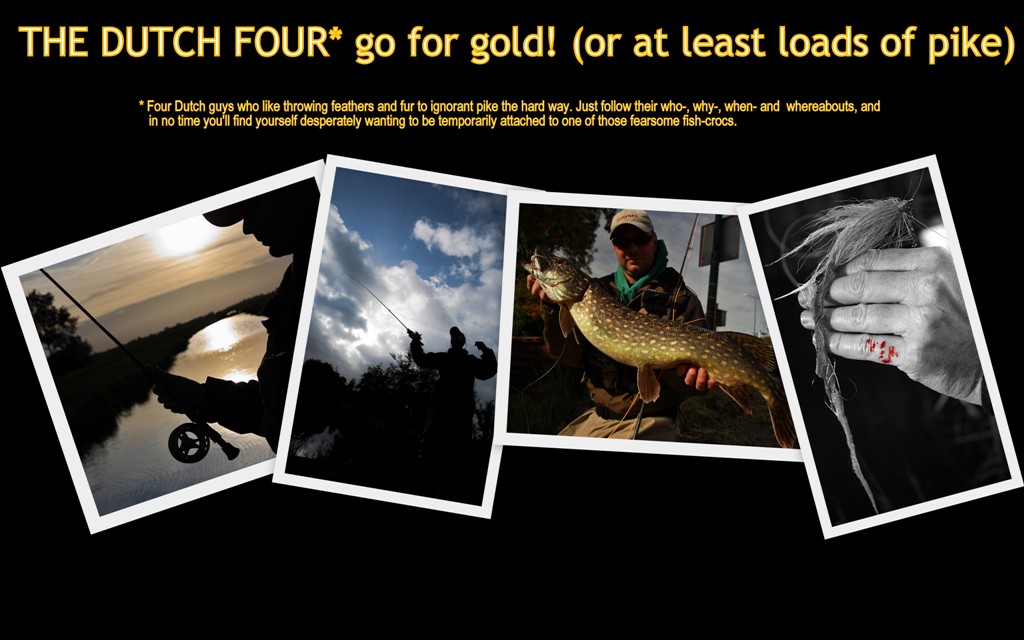


















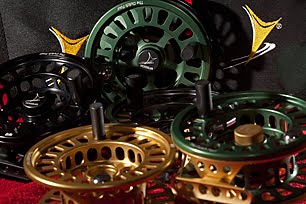
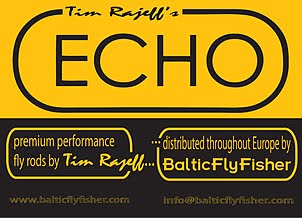

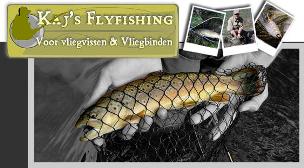

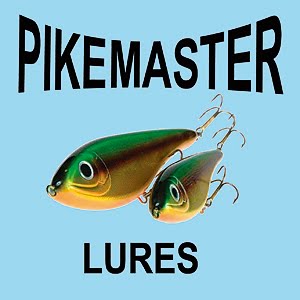

+302.jpg)





